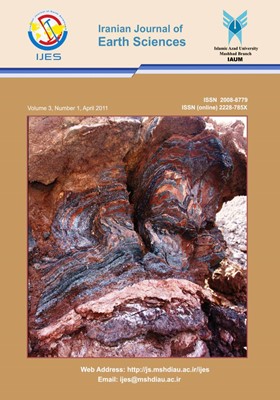Sedimentary structures and depositional environment of the Ashin Formation in Nakhlak area, Central Iran
Subject Areas : Mineralogy
1 - Department of Geology, Faculty of Basic Sciences, North Tehran Branch, Islamic Azad University,P.O. Box 19585-851, Tehran, Iran
Keywords: Central Iran, sedimentary structure, Triassic, Ashin Formation, Nakhlak,
Abstract :
Middle to Upper Triassic (Upper Ladinian to Lower Carnian) deep-sea sedimentary rocks crop out across a large area west of Nakhlak village, Central Iran and have been named Ashin Formation. The up to 304m thick, turbiditic, siliciclastic Ashin Formation consists of alternating turbiditic, thin- and medium-bedded calcareous sandstones, purple, fine-grained volcaniclastic sandstones, and mostly green and violet, very thin-bedded volcaniclastic shales that can be subdivided into three members. Ammonoids collected from members 1 and 3 of the Ashin Formation indicate a Late Ladinian to Early Carnian age for the formation. These alternations fine upwards and exhibit sedimentary structures such as graded bedding, parallel lamination (with parting lineation) convolute bedding, small-scale cross-bedding, load casts, groove casts, prod casts, flute casts, bounce casts, chevron casts, brush casts and chips and protraction traces indicating A to E parts of the Bouma cycle. Septarian nodules occur repeatedly. The lower surfaces of sandstones contain abundant trace fossils belong to the deep-sea Nereites ichnofacies. Numerous signs of strong current activity such as groove casts, flute casts and prod marks associated with trace fossils such as Paleodictyon, Protopaleodictyon, Megagrapton and Lorenzinia indicate that the Ashin Formation represents a deep marine environment. The field and petrographic studies show that the Ashin Formation was deposited in distal parts of submarine fans, on the abyssal plain.

